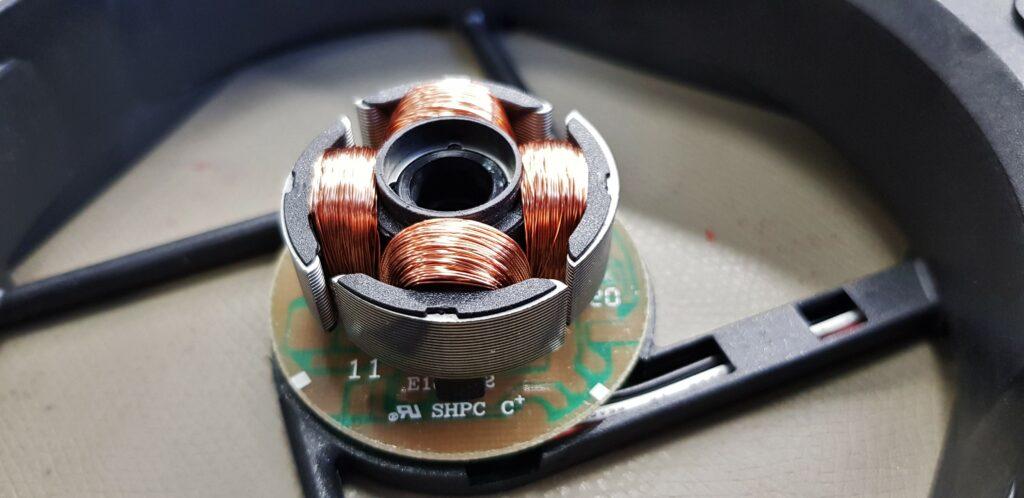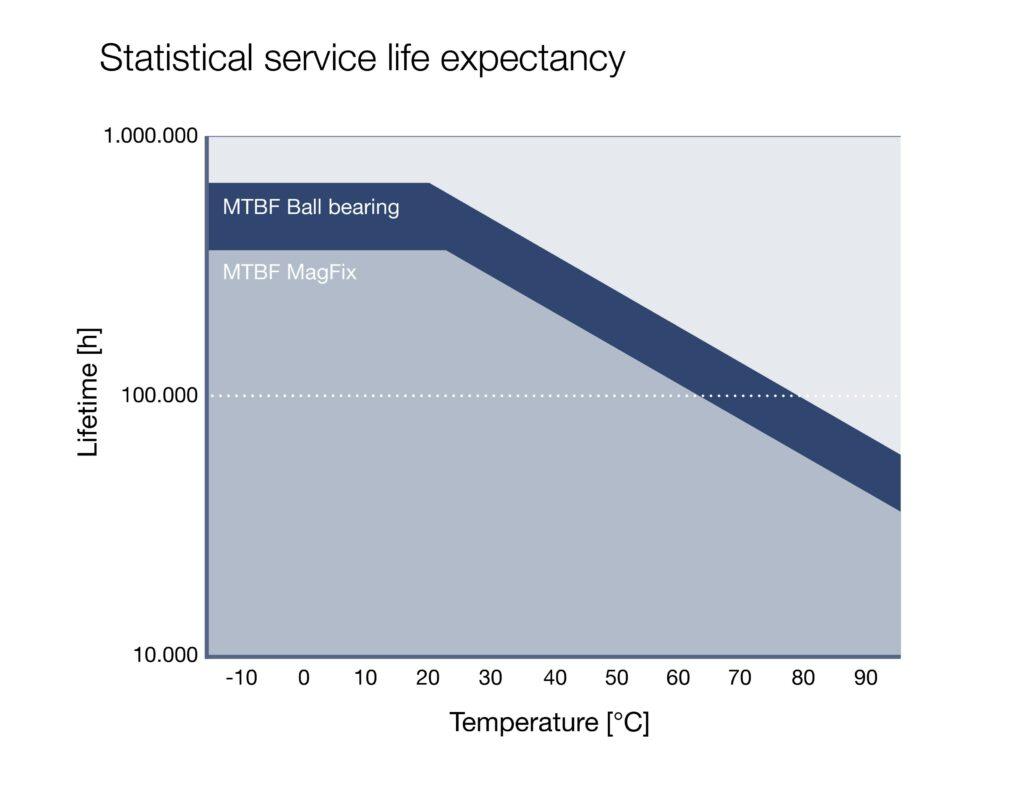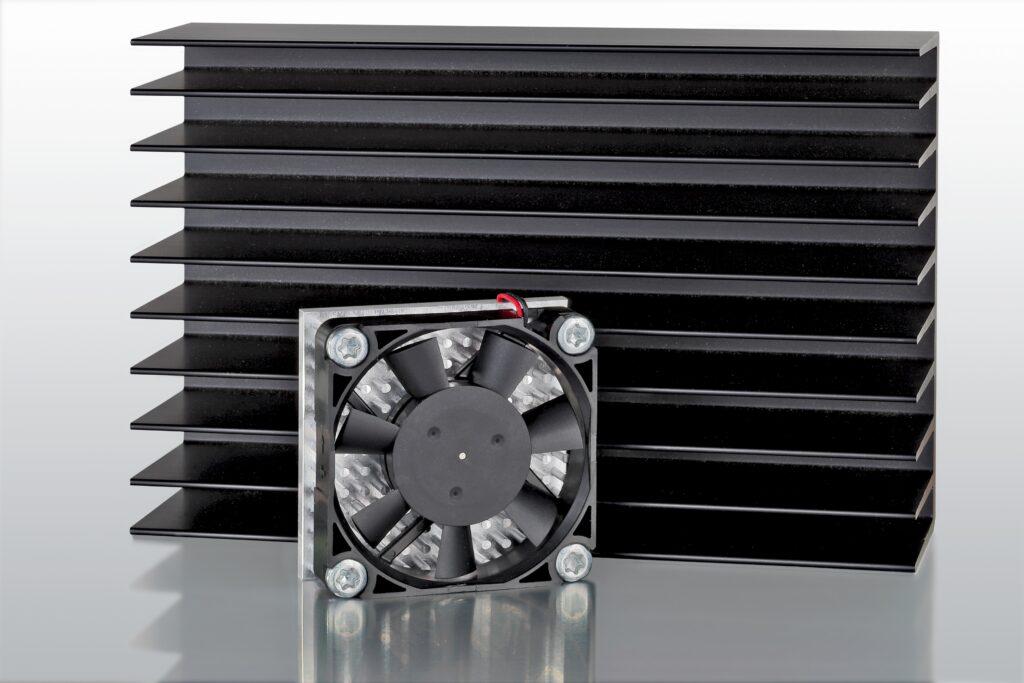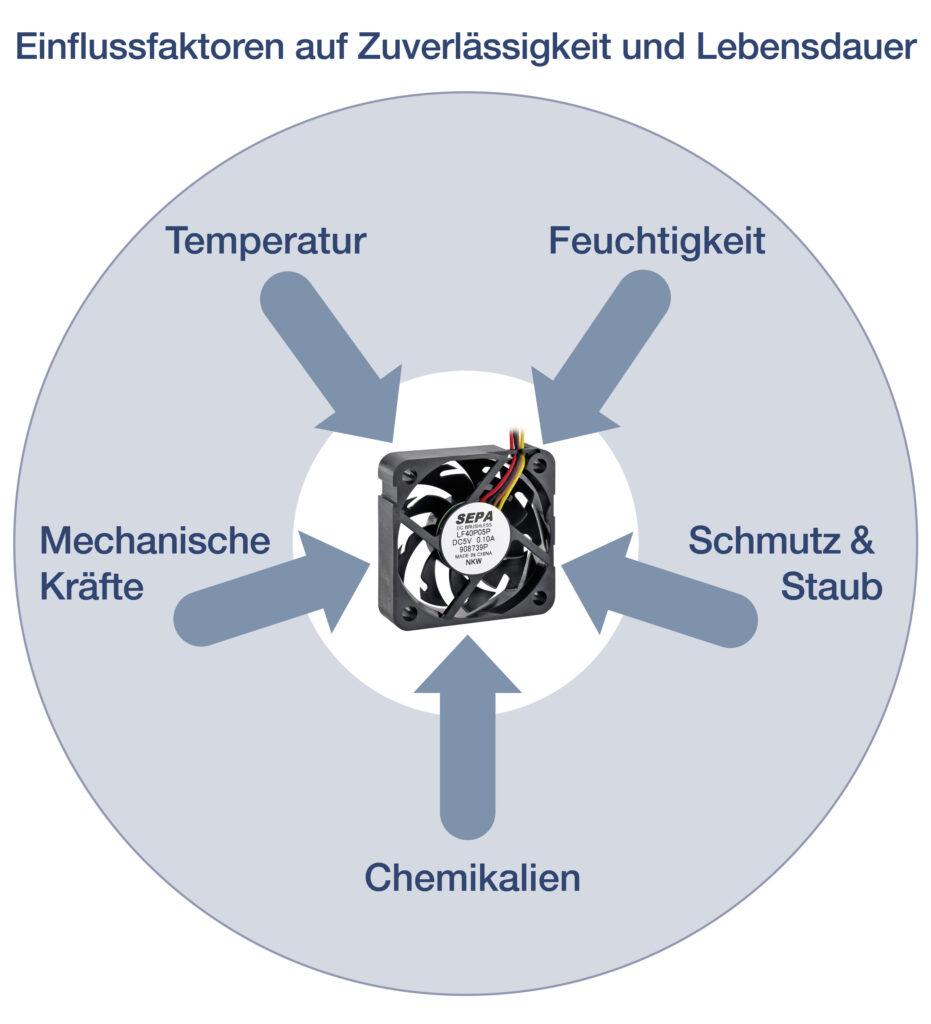Fans for cooling electronics – Fact checking 5 myths
Technical info
Myth No. 1: Fans have brushes
Incorrect. DC fans are always brushless. One often hears the English term „brushless fan“ used in this context. This is also correct as commutation is carried out electronically and not with the aid of brushes as is the case with
simple DC motors in some cordless
screwdrivers or drills. The advantages of brushless motors are: maintenance free, compact
design, slightly better energy efficiency, higher power density and above all a longer service life. AC fans also have no commutation. The torque is generated via a phase shift in the motor.

Myth No. 2: Fans have a short lifespan
Incorrect. There is hardly an electromechanical product that has experienced such a wealth of positive changes on a broad front over the last years as the fan for cooling electronics. Thanks to the use of high grade ball bearings or improved sleeve bearing systems (MagFix®) it was possible to significantly increase the service life expectancy of fans during the last years. The higher power density of modern electronic devices requires sophisticated
cooling management and thus the use of modern compact fans.

The service life specifications of many fan manufacturers however, are sometimes vague and a comparison is not easy at a glance.
How long is the lifespan of a fan?
Here are two terms that are frequently used but which are confusing: L10 und MTBF.
Both are statistical data that refer to large quantities. L10 refers to the period of time in hours, in which 10% of the fans failed. If the service life of a fan is specified as L10 100000 hours, this means that 90% of the fans have a service life of 100000.
MTBF on the other hand is the average
service life expectancy of a fan and indicates the operating time between two failures. As a modern fan can reach a service life of more than 30 years, it is impossible to
actually measure it over this period of time. For this reason it is tested over a considerably shorter period of time at an extremely high temperature and extrapolated.
Normally the service life specifications in the data sheets refer to 40°C. Many manufacturers however, publish considerably higher values at 20° room temperature. Caution! These
figures look good but they are not realistic.
Does speed reduction increase the service life?
Hardly. As the bearing load is very low, there is hardly any wear. The service life is primarily determined by the thermal ageing of the lubricant and the external influential factors (see
illustration). The major benefit of the speed adaptation is quite clearly the noise behaviour. The slower the fan rotates, the quieter it is. A further aspect is the potential energy saving. It is obvious that a reduction of the voltage also means a significant reduction in the power
input. Cost savings soon become notable in particular when several fans are in operation.
Myths No. 3: Fans are large, heavy and expensive
Incorrect. Passive heat sinks are large, heavy and expensive due to the material used. Enormous
progress has been made in the miniaturization of
active heat sinks. The demand for a smaller overall height resulted in even flatter radial fans or fans that can operate as either axial or radial fans
depending on the installation. It is therefore also possible to efficiently cool small and highly lossy components. Power is supplied to the fans via strands that are not directly soldered and often connected via connectors.

With small devices the main problem is not the
dissipation of the entire heat generated by all
components but the cooling of the „Hot Spots“.
Passive cooling requires 5 times more heat sink
volume than fan-assisted cooling and can rarely be installed where space is limited. Thanks to modern, active cooling, the devices can be smaller, lighter and cheaper without having to renounce on quality.
Myth No. 4: Fans are loud
Incorrect. The new fan generation is outstandingly quiet. However, how quiet the fan actually is ultimately depends on the application and on the measures that are taken to optimize the noise. This should be planned during the development stage of the device. As subsequent changes usually involve additional costs and are less effective, we recommend observing the following points:
- Use of sufficiently stable mounting aids, e.g. sleeves for the damping and reduction of structure-borne noises. This can reduce the noise development by several decibels.

- The type of mounting, housing design, housing material, dynamic pressure and
unfavourable flow conditions have a considerable influence on the noise of the fan.
- A simple and inexpensive way of damping noise is to acoustically decouple the fixing screws with the aid of cable bushings or sleeves of rubber and not to attach them directly to the housing wall.
- Choose fans with the largest possible dimensions and the lowest speed necessary for cooling.
- Two fans with the same flow rate can develop up to 12 dB less noise than a single fan with higher speed! Above all the higher frequency ranges that are particularly unpleasant are damped.
Fans should be operated in the optimum working area and the air intake and exhaust
openings in the device should be generously dimensioned otherwise the emitted airborne sound increases significantly. The noise depends on the position and blowing
direction in the device
- If the lowest volume level is required, choose sleeve bearing fans with very low speed as they develop less structure-borne sound than fans with ball bearings. Axial and radial fans with modern blade geometry also develop
significantly less noise than with the same or even higher flow rate
Myth No. 5: Fans are not resistant to humidity and dust
Incorrect. In many applications, electronic devices have to operate reliably under difficult
conditions for many years. Harsh conditions e.g. rain, high humidity and condensation, dust and dirt have a negative effect on the device. However, to ensure reliable functioning,
moisture and foreign objects should be prevented from entering the motor. Fan frames and housings are absolutely waterproof. Temporary condensation does not
negatively affect the operating characteristics of the fan.

In order to protect a fan against dripping water, spray water, and jets of water various fans have IP protection. The difference between IP-protected fans and fans without special
protective measures lies in the coating of the electronics and motor winding.
The coating of the PCB is the simpler and more inexpensive method. It should be fully
assembled, equipped with lead wires and then sprayed with or immersed in protective lacquer. If the classification is IP65 or even IP68, full
grouting is applied. This is more expensive but even more protective. The entire motor hub is filled with the grouting material. The IP protection classes provide the user with detailed information on whether a fan is waterproof or water repellent. Every number stands for the fulfilment of conditions with regard to solid particles or liquids.
Fans with IP-protection have a big advantage in applications, e.g. LED lighting, refrigeration technology, heating and cooling, IT and telecommunication, household applicances,
automotive engineering, monitoring and alarm systems outdoors as well as inverters. The
IP-water protection refers to the motor and motor electronics of fans. Factors such as moisture/humidity, dirt, dust, chemicals and mechanical forces can shorten the service life of a fan.
Models that have been specially
developed for extreme requirements can help to cope with these elements. The migration of lubricants and penetration of dust can be prevented for example by two cover plates. Or in the case of
condensing humidity, the PCB can be specially protected against moisture. There are a variety of preventive measures.









